Specimen holders
Accessories for manipulating objects under stereomicroscopes
Stereomicroscopes are ideal for viewing 3-dimensional objects, but are usually supplied with just a flat black or white stage. To allow objects to be viewed from various angles, microscope manufacturers and other companies sell a range of accessories, and there are some accessories that can be made at home.
| The Watkins & Doncaster E741 Insect Examination Stage enables pinned specimens to be rotated through 360°, raised and lowered.
For more information, go to www.watdon.co.uk |
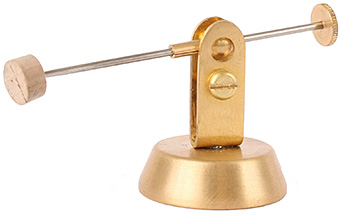 |
 |
The Bioquip 6188 Microscope Stage, patterned on an old Watson item, enables pinned specimens to be rotated about 2 axes. The semicircular cutout in the base allows transmitted light to be used.
For more information, go to www.bioquip.com |
| The Helping Hand comes with 2 adjustable crocodile clips and a magnifying glass (not needed with a microscope).
Available from tool shops or on eBay. |
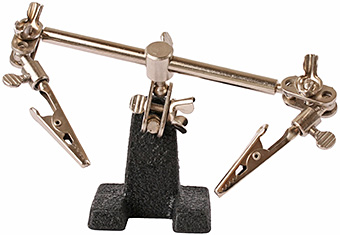 |
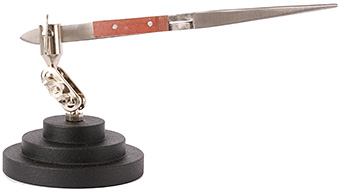 |
Reverse tweezers mounted on an adjustable stand, supplied with 2 pairs of tweezers, one straight and one curved. They are called “reverse” because they grip the specimen when you let go.
Available from model shops or on eBay. |
| A cup stage or ball table like this Olympus SZH-SC Cup Stage makes it easy to tilt and rotate specimens. It is quite large; the white stage plate is 100 mm diameter
A non-slip mat helps to stop heavy items sliding off. It is easy to make a similar stage using domestic items, in a variety of sizes. |
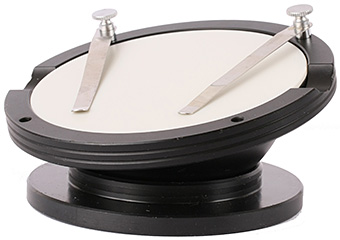 |
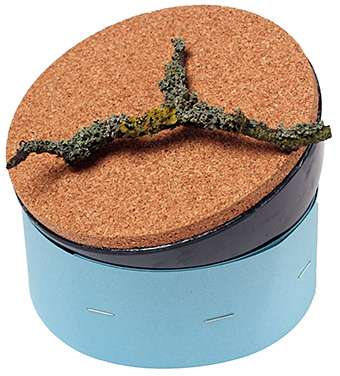 |
A home-made cup stage. The base is made from a strip of thin card, rolled up and stapled to form a cylinder. The ball is a bowl from a kitchenware shop. The top is a cork coaster; just by good fortune the 75 mm diameter fits perfectly onto the ball; it is held in place with UHU glue.
The top could have been made of Plastazote, and can be covered with card or paper if a black, white or coloured background is desired. |
| The ErgoBall is a 30 mm steel ball supported on a 10 mm high base. One version has a magnet for holding specimens, the other version has a 20 mm disc of white Plastazote for holding pinned specimens. A 40 mm high base is available as an option.
For more information, go to www.fullerscopeservices.co.uk, or search for ErgoBall on eBay. (Photograph copyright © Microscope Services Ltd) |
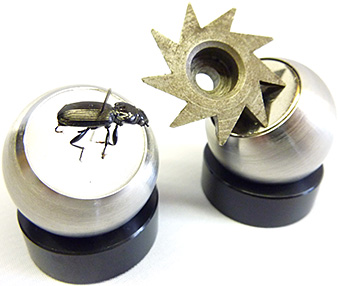 |
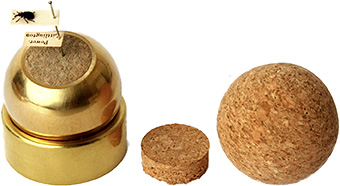 |
Quekett member Martin Hinchcliffe makes a holder that he supplies with one 30 mm cork ball and one 30 mm brass ball with a cork insert (and 2 spare inserts). The brass base is 12 mm tall. |
| The Entoball is a 30 mm steel ball hollowed out to hold a 12 mm disc of Plastazote. Five bases are available, 8 mm, 16 mm, 32 mm, 48 mm (with cut-out) and 64 mm high.
For details and prices, contact Stefan Ober ([email protected]) or Microscopes Plus. |
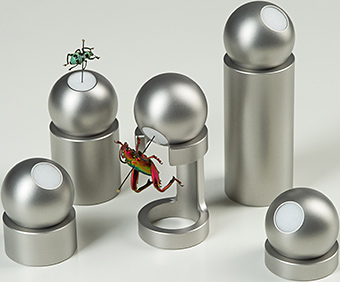 |
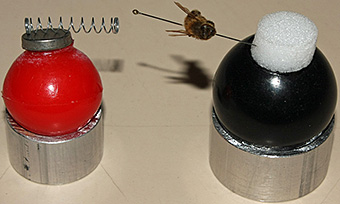 |
Two small home-made ball tables, one with a magnet for holding specimens, the other with Plastazote for holding pinned specimens.
The bases are short lengths of metal tubing. The balls are control knobs. |
| Jewel tweezers, also known as gem forceps, attach to a threaded hole in the base of the microscope, and allow an object to be rotated through 360°.
Available from microscope manufacturers or from eBay sellers such as MicroscopeNet, Microscopes India and Precision*World (search for tweezer in their stores). |
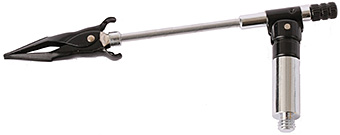 |
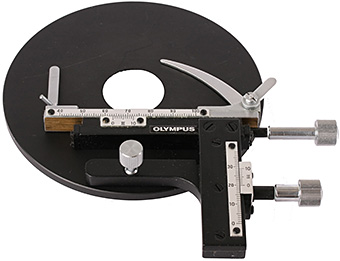 |
A mechanical stage with horizontal controls like this Olympus FM-III Mechanical Stage attaches to a stage plate and provides precise movement of microscope slides.
If your stage plate does not have a central hole for transmitted light, you can buy a spare and drill or cut a hole in it. |
| The Dino-Lite MS16C Specimen Holder has pivoting and rotating joints that allow a specimen to be viewed from any angle. Supplied with 3 types of clip for holding a variety of specimens.
For more information, go to www.dinolite-uk.com (Photograph copyright © Absolute Data Services Ltd) |
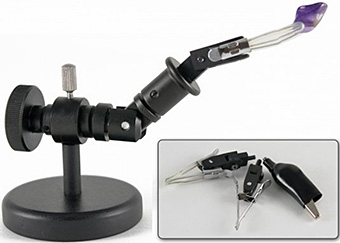 |

